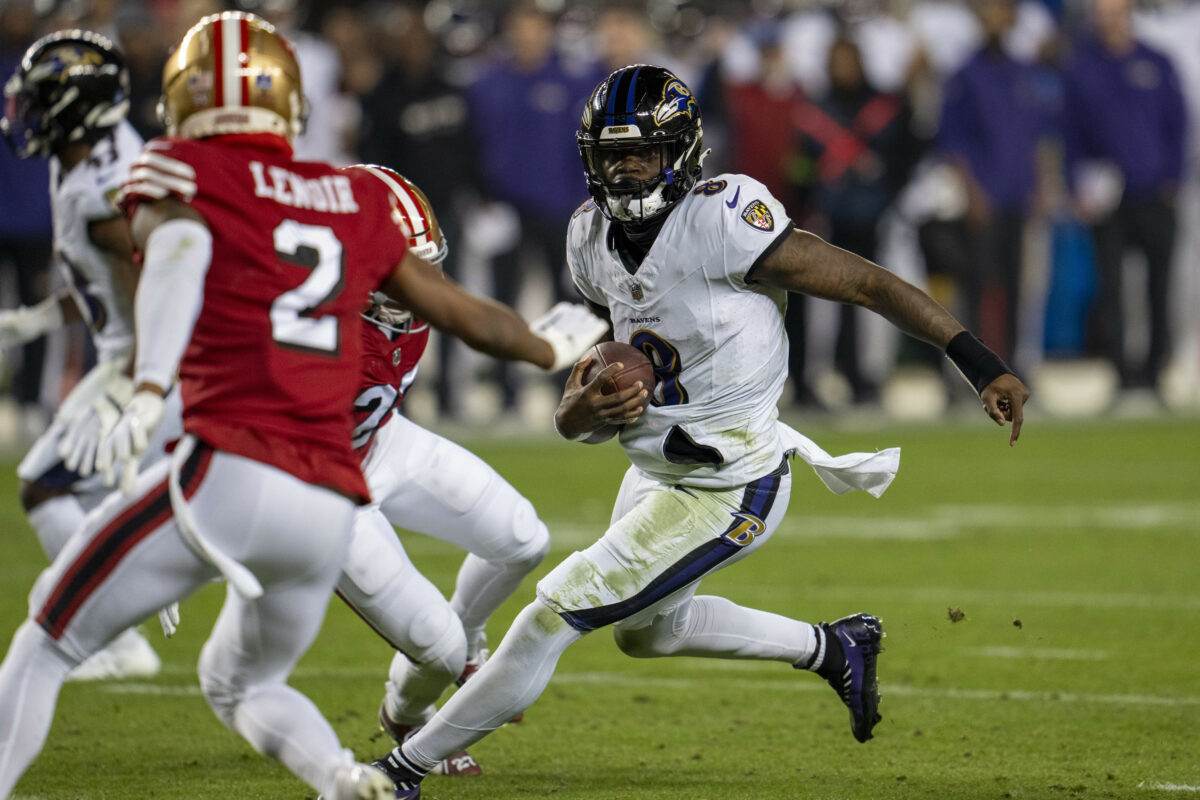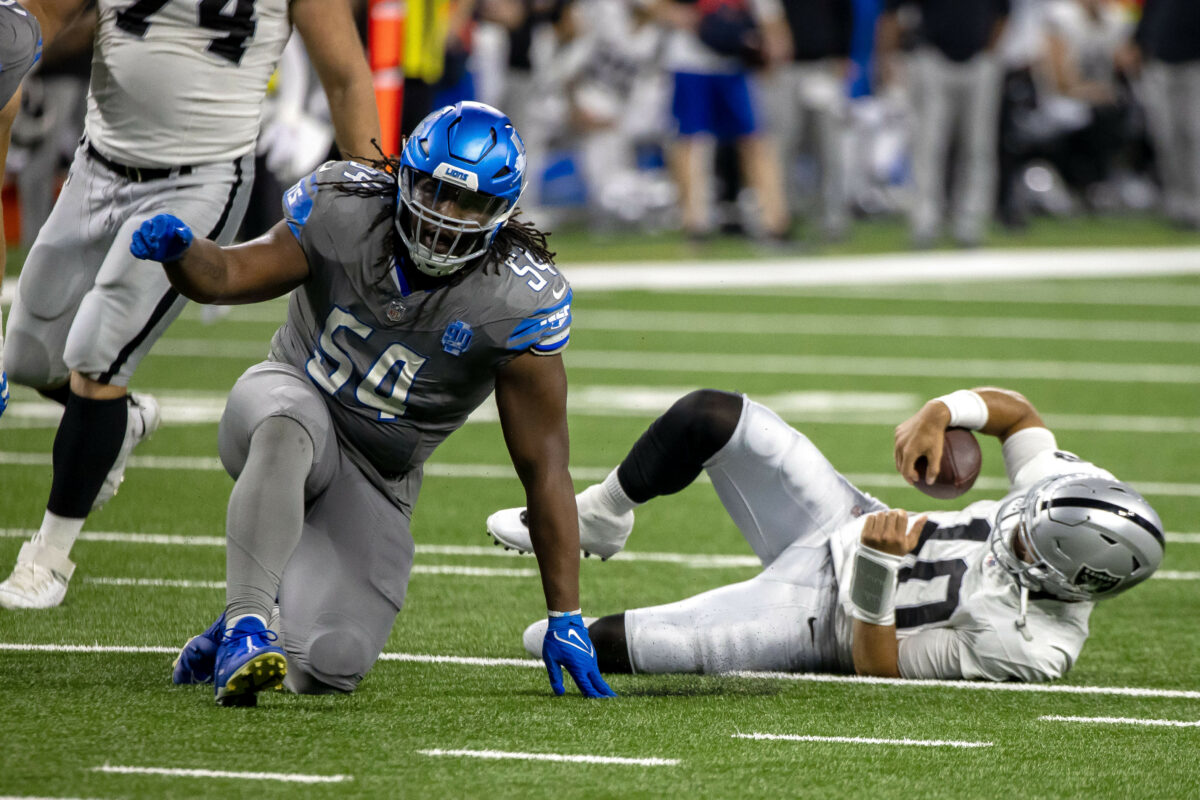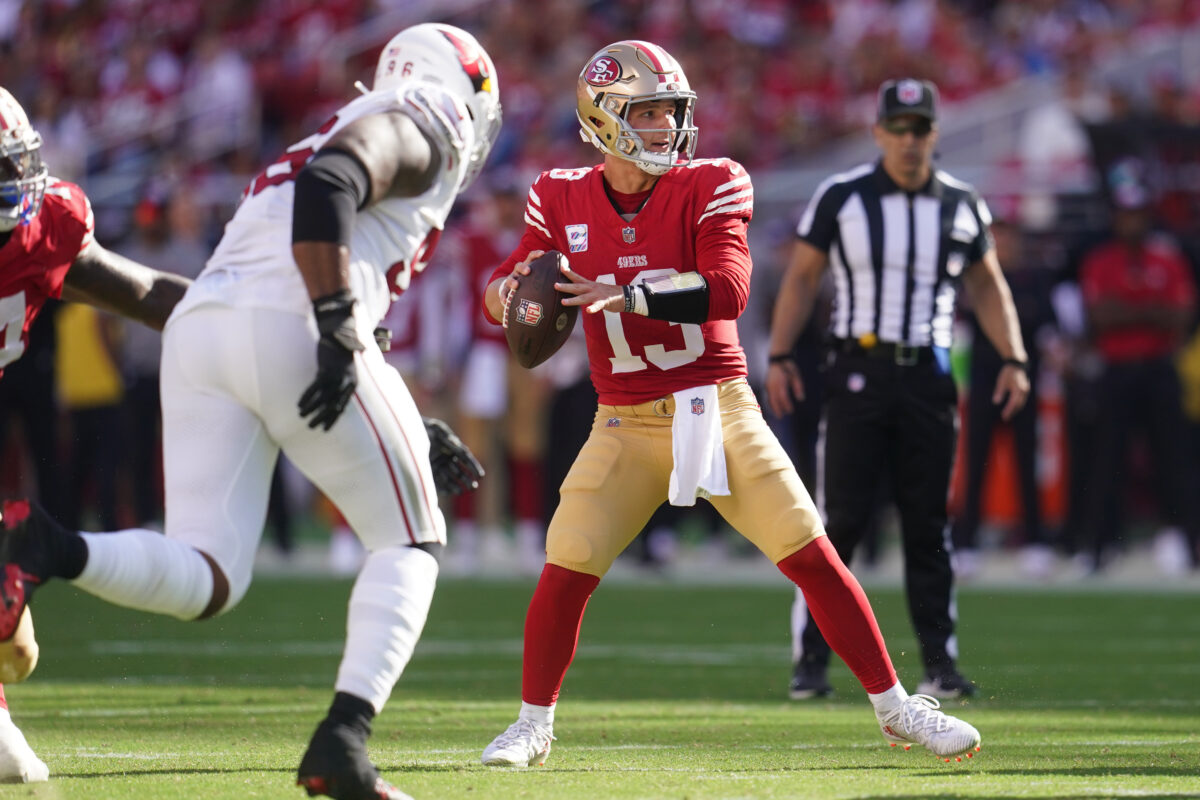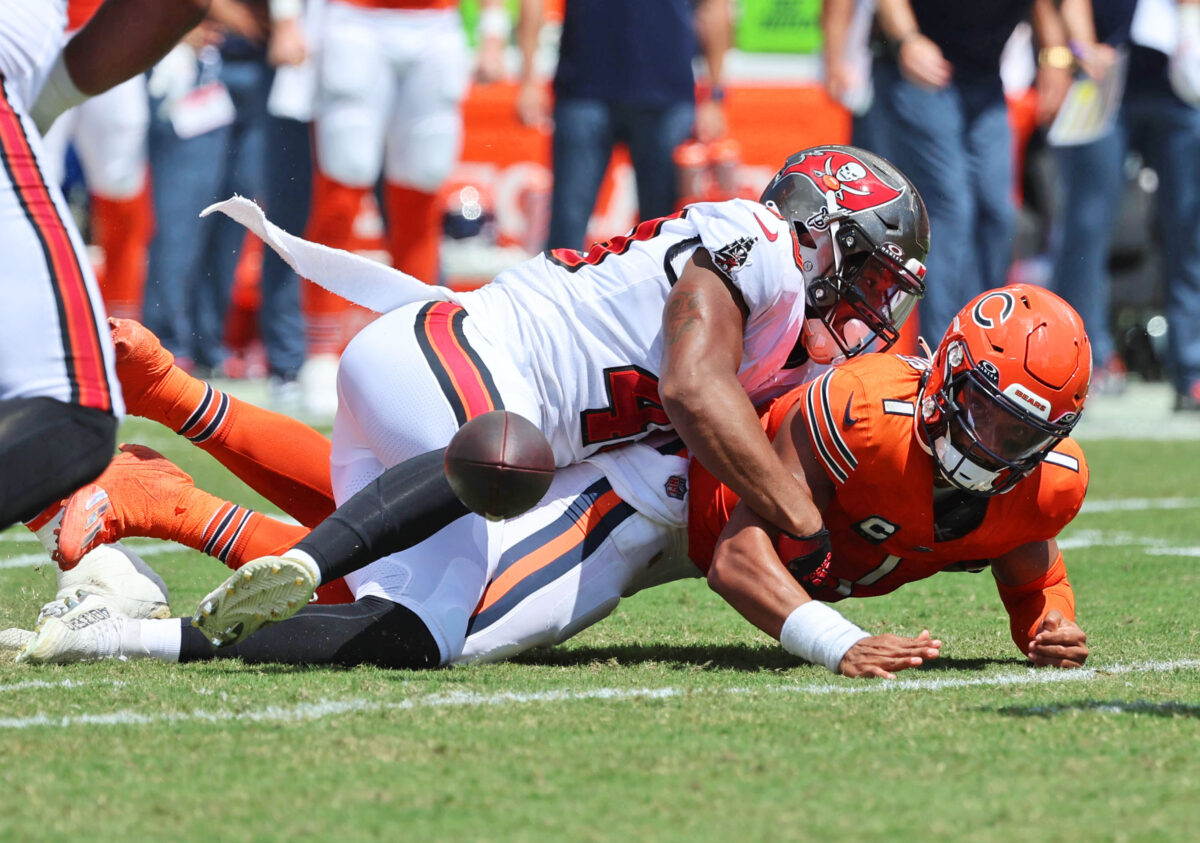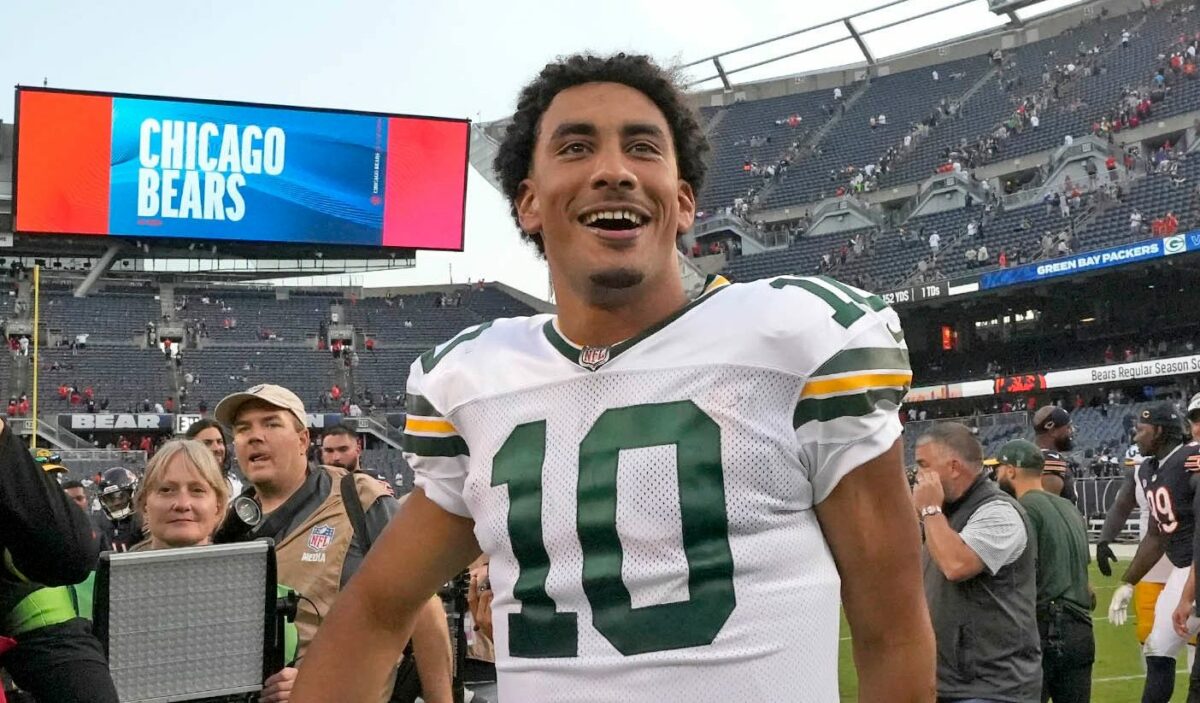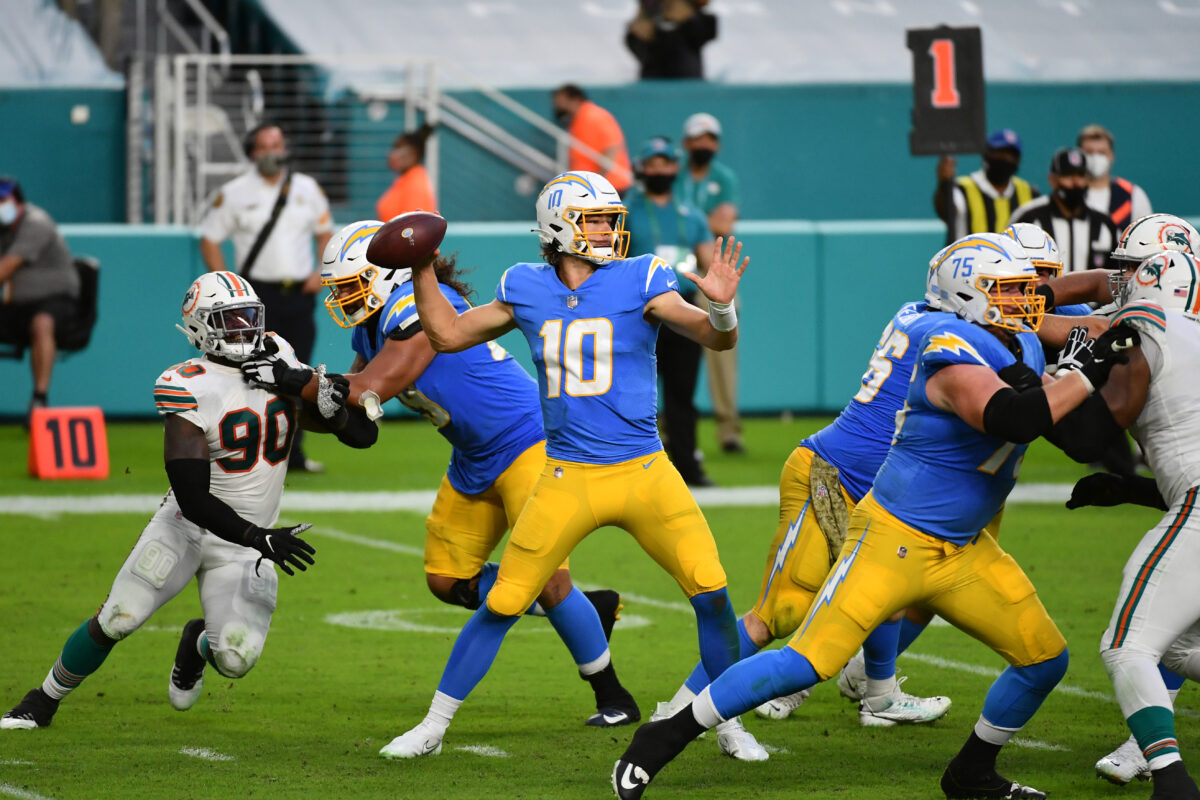Look, the numbers say Brock Purdy is the NFL’s best quarterback. Even if he followed up Week 16’s bed-wetting against the Baltimore Ravens with two more brutal implosions in Weeks 17 and 18, he’d probably finish 2023 as this season’s most efficient quarterback.
That, of course, doesn’t mean he’ll be league MVP.
Purdy vacated his spot as betting favorite thanks to Christmas night’s four-interception performance. In his place rose Lamar Jackson, who had two touchdowns and just under 300 total yards in Santa Clara. Jackson’s numbers aren’t wholly impressive; even advanced stats paint him as a top 10 quarterback instead of a top three guy. But he’s impossible to quantify thanks to his ability to flip a game on its axis with a single play, whether it’s on the ground or through the air.
Well, let’s see who lies between the top-ranked Purdy and No. 10 Jackson.
Expected points added (EPA) is a concept that’s been around since 1970. It’s effectively a comparison between what an average quarterback could be expected to do on a certain down and what he actually did — and how it increased his team’s chances of scoring. The model we use comes from The Athletic’s Ben Baldwin and his RBSDM.com website, which is both wildly useful AND includes adjusted EPA, which accounts for defensive strength. It considers the impact of penalties and does not negatively impact passers for fumbles after a completion.
The other piece of the puzzle is completion percentage over expected (CPOE), which is pretty much what it sounds like. It’s a comparison of all the completions a quarterback would be expected to make versus the ones he actually did. Like EPA, it can veer into the negatives and higher is better. So if you chart all 31 primary quarterbacks — the ones who played at least 256 snaps in 16 weeks — you get a chart that looks like this:

Top right hand corner is good. Bottom left corner is bad. Try splitting those passers visually into tiers and you get an imperfect eight-layer system that looks like this:

These rankings are sorted by a composite of adjusted EPA and CPOE to better understand who has brought the most — and the least — value to their teams across the small sample size. It’s not a full exploration of a player’s value, but it’s a viable starting point. Let’s take a closer look.
